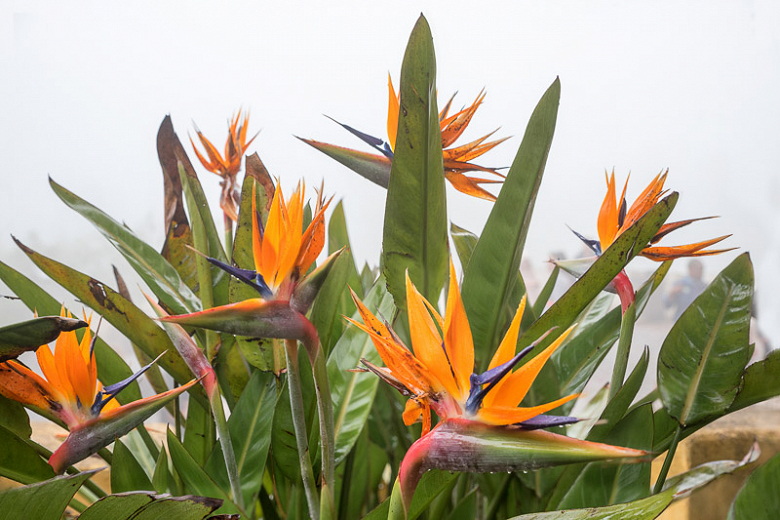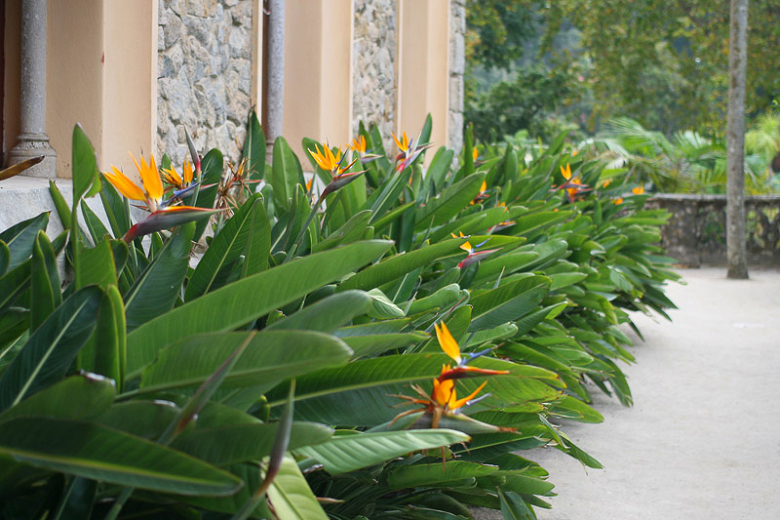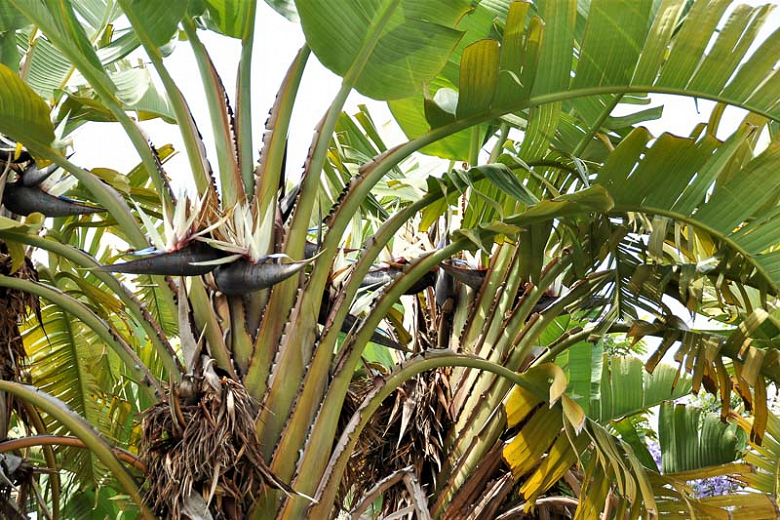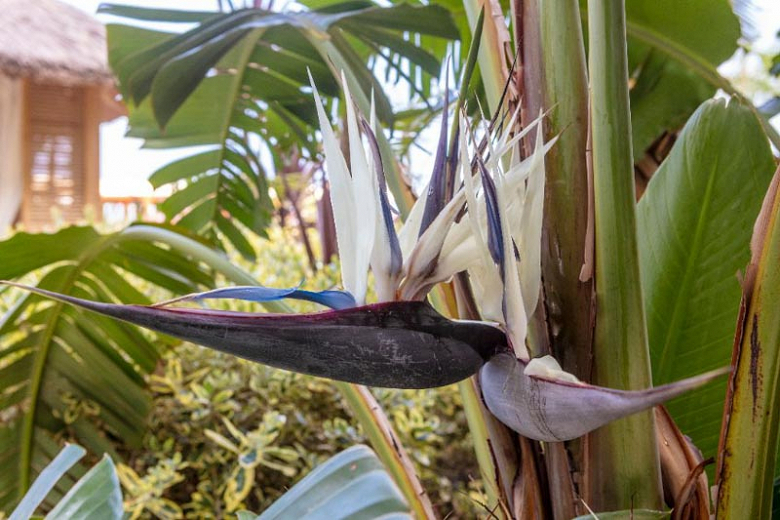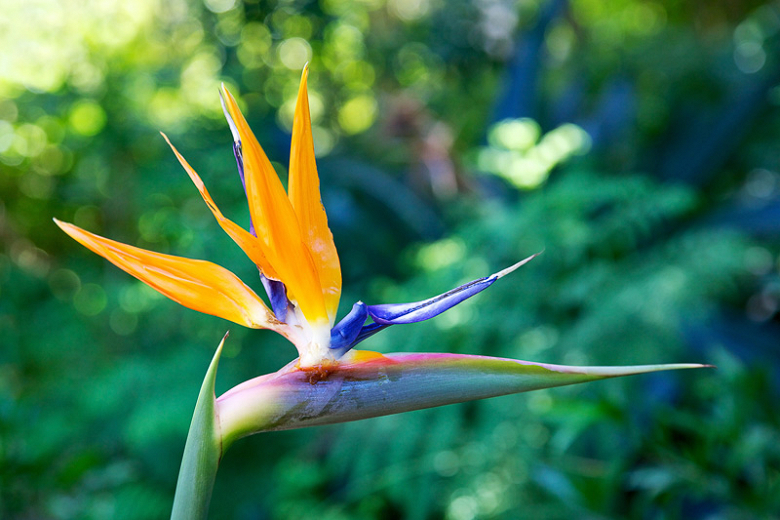Strelitzia reginae (Bird of Paradise)
Screaming out for attention with its unique flowers, award-winning Strelitzia reginae (Bird of Paradise) brings a sensational tropical accent to the garden or in a sunny interior room. This evergreen perennial forms a clump of large, broadly oval, long-stalked, gray-green leaves, which arise from an underground stem (rhizome). They contrast nicely with its beautiful crested flowers. Emerging from a horizontal green and pink beak-like spathe, brilliant orange and vivid blue flowers bloom in succession, resembling the crest on a bird's head. Individual flowers last for about a week, but the spathe holds 5 to 7 flowers, guaranteeing a long-lasting display. They arise from tall stems, up to 6 ft. tall (180 cm), just above the foliage and appear anytime from late fall to late spring, depending on latitude and climate. Highly prized and widely cultivated as an ornamental for its exotic flowers, Bird of Paradise has a striking appearance when not in bloom due to the large glaucous leaves, which resemble those of banana plants.
- Recipient of the prestigious Award of Garden Merit of the Royal Horticultural Society.
- Grows up to 4-6 ft. high (120-180 cm) and 3-4 ft. wide (90-120 cm)
- Performs best in full sun to partial shade in organically rich, well-drained soils.
- During growth, water freely and apply a balanced liquid fertilizer monthly. Water sparingly in winter.
- Once established, Bird of Paradise is drought tolerant and can withstand extended periods without irrigation.
- Bird of Paradise can be grown outdoors in a frost-free location with protection from strong winds. While freezes will kill back the foliage, this plant will slowly rejuvenate over 18 to 24 months if the cold doesn't kill the root system.
- Bird of Paradise looks at its best when massed along walls or hedges, in beds and borders where it will stand out. A great choice for Mediterranean or subtropical gardens, city gardens, or patio containers. Bird of Paradise is also treated as a houseplant.
- Excellent cut flowers with a long vase life (up to 2 weeks).
- No serious disease issues. Keep an eye out for scale insects, glasshouse red spider mites, and mealybugs.
- Cut off old flowers for a neat appearance.
- Bird of Paradise is usually propagated by dividing the plants in spring or using suckers produced at the base. Do not re-pot mature plants too often, as the fleshy roots can easily be damaged by disturbance.
- Toxic to dogs, toxic to cats, toxic to horses.
- Strelitzia reginae is native to the southern and eastern parts of the Cape Province and northern Natal in South Africa.
Requirements
| Hardiness | 10 – 12 |
|---|---|
| Heat Zones | 1 – 12 |
| Climate Zones | 17, 20, 21, 22, 23, 24, H1, H2 |
| Plant Type | Perennials |
| Plant Family | Strelitzia – Bird of Paradise |
| Exposure | Full Sun, Partial Sun |
| Season of Interest | Spring (Early,Mid,Late)FallWinter |
| Height | 5' – 6' (150cm – 180cm) |
| Spread | 3' – 4' (90cm – 120cm) |
| Spacing | 48″ (120cm) |
| Water Needs | Average |
| Maintenance | Low, Average |
| Soil Type | Chalk, Loam, Sand |
| Soil pH | Acid, Alkaline, Neutral |
| Soil Drainage | Moist but Well-Drained, Well-Drained |
| Characteristics | Cut Flowers, Plant of Merit, Showy, Evergreen |
| Tolerance | Drought |
| Garden Uses | Beds and Borders, Patio and Containers, Wall-Side Borders |
| Garden Styles | City and Courtyard, Informal and Cottage, Mediterranean Garden, Traditional Garden |
